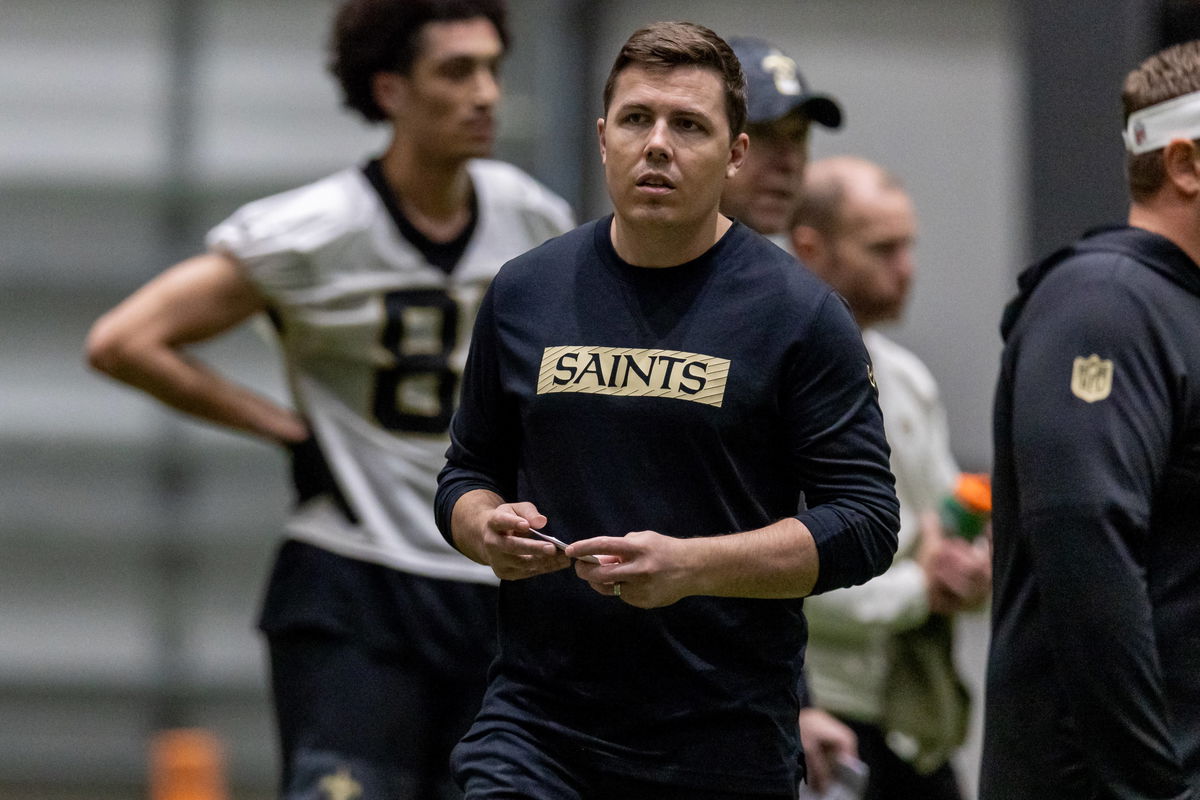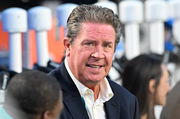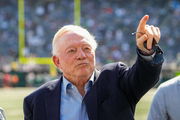
Imago
NFL, American Football Herren, USA New Orleans Saints Rookie Minicamp May 10, 2025 New Orleans, LA, USA New Orleans Saints head coach Kellen Moore during rookie minicamp at Ochsner Sports Performance Center. New Orleans Ochsner Sports Performance Center LA USA, EDITORIAL USE ONLY PUBLICATIONxINxGERxSUIxAUTxONLY Copyright: xStephenxLewx 20250510_neb_la1_0143

Imago
NFL, American Football Herren, USA New Orleans Saints Rookie Minicamp May 10, 2025 New Orleans, LA, USA New Orleans Saints head coach Kellen Moore during rookie minicamp at Ochsner Sports Performance Center. New Orleans Ochsner Sports Performance Center LA USA, EDITORIAL USE ONLY PUBLICATIONxINxGERxSUIxAUTxONLY Copyright: xStephenxLewx 20250510_neb_la1_0143
New Orleans Saints‘ decision to make Spencer Rattler the starting quarterback, despite Tyler Shough’s stronger raw preseason numbers, reflects a measured emphasis on extended consistency rather than short-term flash. The franchise responded with a leadership shift and symbolic reorientation. Hiring Kellen Moore as head coach and consultant aimed to establish accountability and offensive identity.
Watch What’s Trending Now!
Rattler’s selection followed a deliberate, prolonged evaluation. The coaching staff expanded the sample size across offseason programs and preseason games, prioritizing proven composure over a single standout performance. During a conversation with Mike Florio and Chris Simms, Moore said, “I think you have to be very conscious of where the locker rooms at and where everyone’s mindset is. I think our guys did an awesome job of just really embracing both these guys. You know, locker rooms are really, really important. That’s the most important thing in our entire organization.”
The locker room response favored a leader they had seen perform consistently, especially crucial, and the sudden retirement of Derek Carr following shoulder issues created instability in the quarterback room. In such a critical transitional moment, teammates leaned toward a QB whose qualities were reflected in Rattler’s performance. His continuity offered reassurance in an otherwise unsettled situation. In seven appearances, he logged 1,317 passing yards, four touchdowns, and five interceptions. Setting a franchise rookie record for passing yards, an achievement that carried weight inside the locker room.
ADVERTISEMENT
From @PFT_Live, Saints coach Kellen Moore talks about his QB decision. pic.twitter.com/5tHkt1jn9c
— ProFootballTalk (@ProFootballTalk) September 3, 2025
2024 Head coach Dennis Allen later reflected, “He got thrown into the fire, and he didn’t shrink. That matters in this league.” Those moments, however, were just the opening notes of a longer symphony Rattler is still learning to conduct. Safety Justin Reid, while not picking sides, emphasized that both quarterbacks received equal opportunities, suggesting a locker room mindset hinged on fairness and merit.
At the American Century Championship, when Justin Reid was asked if either quarterback had come out in front during the team’s offseason workouts, he said, “We feel it’s a competition. I mean, both guys are getting first-team reps, and you know, it’s about them just making the most of an opportunity. It’s kind of hard to see what you got in OTAs. You know, it really tastes when some pads get put on, I really think when the preseason games come around, that things will start to align themselves more. But right now, it’s just not healthy competition.”
ADVERTISEMENT
Rattler’s body of work across the preseason showed steady reads, low mistake rates, and poise under pressure—qualities less visible in Shough’s brief showcase. The Saints’ 27-13 loss to the Chargers also brought a setback, as Shough revealed he had bruised his right knee.
Beyond the numbers, Rattler earned credibility in joint practices and rotations. “Spencer has some playmaking ability, too. You know, he’s going to make some big-time plays with his legs, with his arm. What stood out was just his consistency over the entire off-season program and through preseason,” HC Kellen Moore said. Now the Saints will look to see if Rattler can carry that into Week 1 and finally get the offense into the end zone against Arizona.
ADVERTISEMENT
The Saints will be fighting against the ‘mediocrity’ label in week 1
Regional columnists have painted the Saints as trapped in the league’s mushy middle after the team finished 0-4 last season. Jeff Duncan of Fox 8 highlighted a troubling trend: a 0-7 record against winning teams last season, after the 20-19 loss to the Commanders. But add the 34-0 loss to the Packers, the following week, and the record becomes 0-8. Competitive resistance usually appeared only in the fourth quarter, if at all. That kind of sustained underperformance calls for more than tweaks—it demands transformation.
“It would be one thing if this were simply a one-off, if we could chalk it up to the midseason coaching change and all the injuries the team has suffered. But it’s been a recurring issue now for three years. The Saints were 2-5 against winning teams in 2022 and 2-7 against them last year. In all, they have lost 18 of their last 22 games against winners. That should tell you all you need to know about the state of the franchise. The Saints no longer measure up with the league’s elite. They’re back to being also-rans, stuck on the treadmill of mediocrity. And most troubling of all, there’s no clear exit plan in sight,” Duncan wrote in December 2024.
ADVERTISEMENT
The word “mediocrity” has haunted New Orleans before. Former safety Kenny Vaccaro used it back in 2016, wondering aloud why the Saints had sunk to three straight losing seasons. What followed was one of the great turnarounds in team history. From 2017 to 2020, the Saints ripped off four straight division titles, with back-to-back 13-win seasons and a roster that many still call the most complete in franchise history. The peak was short-lived, but it proved what the right mix of talent, leadership, and urgency could build.
Top Stories
“RIP”: Prayers Pour In as Tom Brady’s Raiders Struck by Tragedy

“Rest in Peace”: Prayers Pour In From Dan Marino as Dolphins Legend Mourns Tragedy in South Florida Football

“NFL Was Crying”: Maxx Crosby Says League Forced Him to Remove Shoes Honoring His Daughter

Jerry Jones Reaches Breaking Point With Cowboys Coach as Matt Eberflus Receives Clear Order

Chiefs QB Patrick Mahomes Loses Faith in Kansas City With Cowboys Decision as FOX Host Calls Out Clark Hunt’s Ownership

Now, the Saints try to summon a similar shift. They’ll take the field against the Cardinals in “Gameday Golds,” their throwback uniforms paired with gold-painted end zones for the first time since 2002. The cosmetic change doubles as symbolism. With a fortified offensive line, new leadership, and a visual reset, Week 1 becomes more than just another opener. It’s a chance to prove that New Orleans isn’t going through any mediocrity curse. But they are ready to carve out a new identity.
ADVERTISEMENT
ADVERTISEMENT
ADVERTISEMENT

